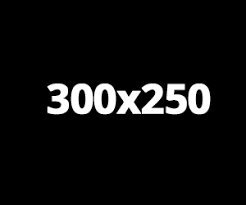Understanding the Rise of Marine Le Pen’s National Rally: A Closer Look at the Qatar Plot Influence Campaign
Many in France exhaled deeply when Marine Le Pen’s far-right National Rally party faced an unexpected defeat in the second round of the recent legislative elections. Yet, this occasion for relief has prompted deeper inquiries into how Le Pen nearly clinched a victory just months ago. To understand this, we must delve into the mysterious forces at play that bolstered her party’s influence.
Recent research indicates that the remarkable support for Le Pen’s party in the July elections was not solely a spontaneous expression of public sentiment. In collaboration with fellow researcher Sohan Dsouza, I investigated a sprawling influence campaign known as “The Qatar Plot,” which highlighted how far-right, anti-Muslim narratives gained traction across social media platforms globally, but predominantly in Europe.
The Scale of the Operation: A New Kind of Political Influence
The Qatar Plot represents a significant dark-money campaign aimed at distorting public opinion and fueling far-right ideologies. Our findings suggest this initiative reached at least 50 million individuals through popular platforms like Facebook, X, YouTube, Telegram, and TikTok. On Facebook alone, the campaign’s ad expenditure ranged from $100,000 to $240,000— this is a conservative estimate and positions The Qatar Plot as the largest known influence operation focused on European elections based on ad spend.
From late 2023 to mid-2024, the campaign saturated European social media with anti-Muslim messaging, significantly amplifying the so-called “Great Replacement” narrative. This conspiracy theory posits that mysterious global elites are orchestrating a demographic shift aimed at replacing Europe’s white population with racially diverse groups, particularly Muslims.
Historically, anti-Semitic figures like George Soros were scapegoated in these discourses. However, the Qatar Plot has shifted the blame towards Qatar, revealing a notable evolution in the targets of far-right rhetoric amidst changing geopolitical contexts.
Rejecting Accountability through Deception
What’s particularly striking about the Qatar Plot is its strategic use of deceptive tactics to evade accountability. The campaign employed fake NGOs, fraudulent petitions, and hijacked social media accounts, disseminating Islamophobic content that resonated with targeted demographics. One eye-catching initiative involved a parody Eurovision song that framed Qatar as the mastermind behind “Europe’s Islamisation.” This cheeky piece was disseminated widely by prominent far-right accounts, showcasing the creativity fueling such disinformation campaigns.
The campaign also ventured into generating AI-crafted images and videos designed for shock value. Prominent among these were cartoons depicting mythical Qatari creatures attacking the European Union—visuals that, alarmingly, went unchecked by platforms like Meta, despite policies intended to flag AI-generated content.
Sophistication in Targeting: A Multi-Faceted Approach
Characteristically, the operation deployed a sophisticated strategy, with tailored messages for various audiences. In Europe, anti-immigration sentiments were emphasized; in contrast, in Lebanon, narratives that feigned calls for peace purportedly stirred sectarian tensions—shifting blame for the conflict in Gaza away from Israel and onto Iran and Hezbollah.
Astroturfing efforts emerged in Lebanon, designed to undermine the influence of established political factions by promoting new entities that appeared grassroots. One such front organization, “Citizens for Human Lives,” attempted to pressure Qatari officials regarding hostages in Gaza, generating attention until scrutiny prompted its removal from platforms.
Leveraging Social Media to Maximize Reach
The operations did not stop at creating fake accounts; they exhibited alarming efficiency in hijacking actual accounts for their purposes. With tactics as insidious as using a Vietnamese proxy to obscure their identity, perpetrators paid for their cause in obscure currencies—enabling them to circumvent detection and comprehensively target audiences across various platforms. Even as social media companies hesitantly moved to limit such campaigns, the Qatar Plot had already made significant inroads.
Intersecting Campaigns: A Regional and Global Concern
The Qatar Plot was not operating in isolation; concurrent campaigns, notably one by the Israeli PR firm STOIC, sought to propagate similar anti-Muslim narratives. Funded by Israel’s Ministry of Diaspora Affairs, STOIC aimed its disinformation efforts at undermining support for Palestinians in the U.S and Canada, revealing the convergence of interests between various far-right groups and states.
As the Israeli-Palestinian conflict heightened, the nuances in narratives began to converge, creating a symbiosis between the messaging of European far-right groups and the strategies employed by certain Israeli factions. This partnership seeks to reinforce Islamophobia as a means of unifying disparate political agendas across Europe and beyond.
The Implications of Unregulated Digital Influence
As digital platforms become battlegrounds for ideological conflicts, the Qatar Plot exemplifies a sophisticated manipulation of social discourse. Both the individual players behind these operations and the companies that unwittingly facilitated their growth must be scrutinized. Failure to hold these entities accountable risks permitting further seeping of hate speech and manipulation of public perception—a development that could lead to enhanced violence and the rise of more far-right figures similar to Le Pen looming on the electoral horizon in multiple countries across Europe.
Understanding and addressing these dynamics is crucial, as they threaten to perpetuate cycles of division, fear, and political extremism, revealing the urgent need for vigilance against the forces that seek to exploit societal fears and biases for political gain.




